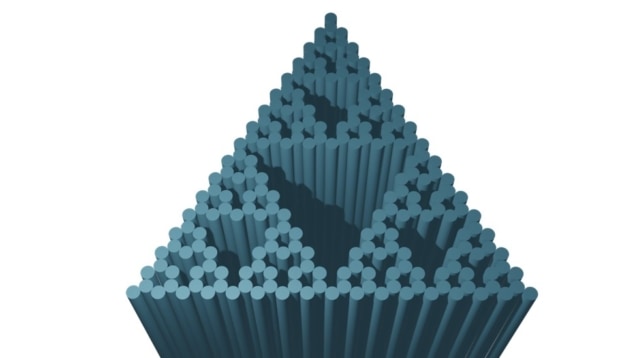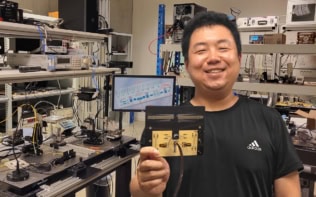
Topological insulators for light have been created using fractal patterns instead of conventional lattice structures. The fractal photonic topological insulators (PTIs) were made by an international team of researchers, who have shown that light moves faster along the edges of these structures than it does on conventional PTIs. The discovery also defies conventional wisdom because the fractal PTIs lack bulk optical bands, which are normally seen as being essential for PTIs.
Topology was initially a mathematical field but has grown massively in physics since the discovery of topological insulators, materials that are electrical insulators in the bulk but conduct at their edges. PTIs are the optical analogues of topological insulators and support the unidirectional propagation of light on their edges. In a PTI, light is “forced” to propagate in only one direction because it cannot scatter backwards even in the presence of minor defects. Possible applications of PTIs include topological lasers, which could revolutionize optical computing and integrated photonics.
Fractals make it faster
PTIs are usually made of structures known as photonic crystals, which have the undesirable side effect of slowing the speed of light. As a direct consequence, the energy and information carried by the light is tardy. To solve this problem, Tobias Biesenthal and colleagues at the University of Rostock in Germany, Zhejiang University in China and Israel’s Technion-Israel Institute of Technology, have used fractals to create PTIs. Fractals are self-similar structures in which identical patterns reproduce themselves on smaller and smaller length scales. They can be used to describe complex entities such as snowflakes and to calculate the length of a country’s coastline.

3D topological insulators go photonic
An essential property of fractals is the absence of an interior, they are instead full of edges. This absence of a bulk material means that a fractal will not slow down light as much as conventional materials. Indeed, Biesenthal and colleagues have created PTIs with Sierpinski patterns (see figure) and shown that light moves around them 11% faster than in ordinary PTIs.
New chapter for topological physics
However, speedier light is not the most important result of this work. The properties of topological insulators are usually defined by the properties of their interior – the “bulk-boundary correspondence”. This makes the interior crucial for obtaining topological effects. In this latest research, Biesenthal and colleagues showed that, contrary to popular belief, a PTI can be a structure that does not have a true bulk. Hence these new fractal PTIs are a new class of materials that could open door to a better understanding of topological physics and its future applications.
More details can be found in a paper published in Science.



